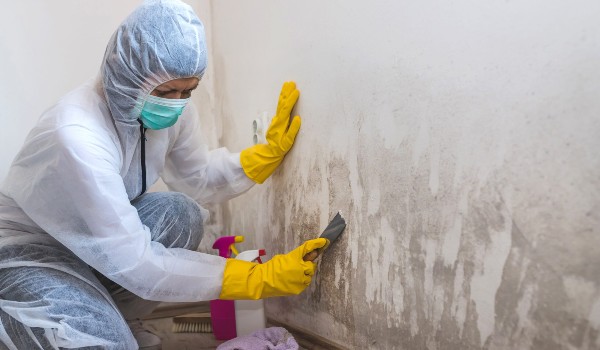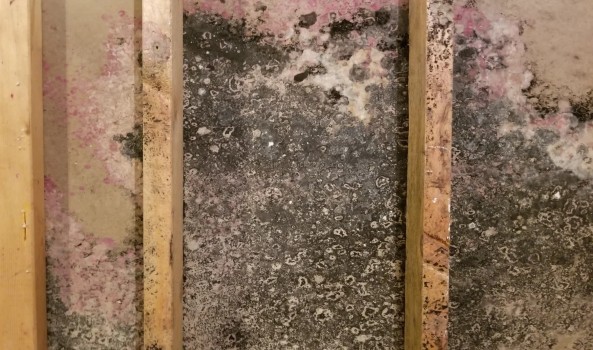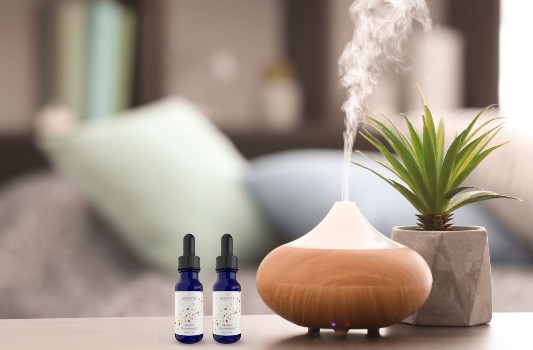How to Get Rid of Mold in Your Home

One day, you come home after a couple of hours, and you smell something that you feel like shouldn’t be there? A musty, earthy, damp type of odor? Well, there’s a high probability you have mold in your house somewhere. The question is how to get rid of mold and how to prevent it from coming back. We will discuss all your options here in this article.
Before You Start: Safety Tips and Supplies
It is important to be aware of the possible health risks of mold and prepare accordingly. Here are some safety tips before you begin removing the mold:
Safety Precautions Before Mold Removal
- Wear A Mask: Make sure you have a mask on, preferably an N95 respirator, or if there is a significant amount of mold spread throughout an area in your home, you might want to consider using a half-face or full-face respirator.
The reason for a mask is the spores that mold releases into the air; that’s how it spreads, actually. The spores find another humid surface, stick to it, and start growing. - Wear Gloves & Proper Clothing: Wear gloves and clothing so that the mold and the cleaning chemicals you are going to use don’t come into contact with your skin. The reason is that mold spores and chemicals can cause skin irritation.
If you have any kind of skin allergies and the mold or the chemicals contact with your skin, they could potentially trigger a reaction like a rash. Wear either shirts with long sleeves and pants that you can wash immediately after the whole process, or wear disposable coveralls you can toss out after. - Wear Goggles: This is done so that the mold spores, dust, and other small particles don’t enter your eyes and cause irritation. Preferably, use safety goggles that cover your eyes completely with no open vents.
- Do Not Disturb The Mold Too Much: Be careful when removing the mold; try not to dry clean since that just makes the mold spread into the air easily, and the cleaning and vacuuming process will be more difficult.
- Do Not Mix Different Cleaners: It can be potentially dangerous to mix different types of cleaners together since some mixtures will lead to poisonous combinations that release hazardous fumes. An example would be mixing bleach with ammonia.
- Open the Windows: To have good ventilation for fresh air circulation and drying the area in order to reduce moisture, you can open the windows.
- Seal the Area off: If the problem is severe, you might want to isolate that area using plastic sheets in order to prevent the spores from spreading any further while cleaning.
- Get Help: Lastly, if you think the situation is too bad and you can’t handle it yourself, then call professionals to do the job.
Now, for the supplies you will be needing:
Tools and Cleaning Materials You’ll Need
- Cleaning Solutions: Detergents, white vinegar, baking soda with water, dish soap with water, and special mold removers all work when removing mold; however, some are milder than others, so it depends on the severity of the mold which one to use.
- Scrub Brushes, Sponges, Rags & Microfiber Cloths, Paper Towels: Depending on the surface and if it’s rough or delicate, you need hard or soft scrub brushes and sponges, along with rags and cloths and paper towels to dry it afterwards.
- Spray Bottles: To apply the cleaning solutions.
- A Bucket: To carry warm water.
- A Vacuum Cleaner: Preferably one with a HEPA filter to capture the spores.
- Plastic Bags: For the waste.
How to Remove Mold from Walls

To deal with mold on walls, you need to follow these steps:
- Cover Furniture
If the mold has grown inside your house or anywhere with furniture around, cover them so that you won’t have to get the spores off later. You can even move them outside temporarily if possible.
- Seal off the Area
Use plastic sheets to prevent spores from spreading into other areas.
- Type of Wall
Identify the type of wall you are dealing with. If it’s something as rigid and tough as cement, the process is simple since the mold is going to be on the surface only.
But if it’s drywall or porous drywall, the mold might have penetrated inside, so you might have to cut off that part and then start removing the mold. If it’s a painted wall, the mold might get behind the paint, so you will have to scrape off the paint and repaint after the whole process is done.
- The Loose Mold
Get rid of the loose mold using a brush or cloth.
- Dry the Surface
You can do this either by opening the windows a couple of hours beforehand, or you can use a fan or hair dryer to dry the mold area. Careful, if you haven’t isolated the area, the spores might become airborne.
- Apply Cleaning Solution
Use any of the cleaning solutions we mentioned above and either spray them onto the mold or dip a sponge into the solution and apply it. Let the solution sit for a while.
If it is bleach you have used, let it sit for 10 minutes; if you applied vinegar, let it sit for longer, around 30 minutes. Note that bleach can damage drywall and paint, so use it only if you have to and on rough surfaces.
- Start Scrubbing
Scrub the mold away with a brush, sponge, or cloth. If the mold doesn’t go easily, just keep scrubbing, and don’t use rough brushes and hard scrubbing on drywalls, since that will potentially damage the surface and make the spores spread.
If it is a rough surface, for instance, a cement, stone, concrete, or brick wall, you can be more aggressive and even use sandpaper for really stubborn mold, just be aware that the mold is going to spread, most likely, and you'd better have isolated the area.
- Rinse & Dry
When the mold is completely gone, rinse the spot and then dry it completely so that the mold does not grow back due to the moisture. This is how to get rid of mold on walls permanently: you need to control the humidity and make sure the walls stay dry at all times.
- Throwaways
Put the moldy sponges, paper towels, rags, cloths, and gloves in a plastic bag and get rid of them.
- Vacuum
Lastly, vacuum the area to capture any remaining spores.
Remember, if the mold is too severe, you can always call a professional to do it for you. To find out how much they will charge you, //mold inspection cost// is recommended.
How to Get Rid of Mold on Wood

The process is going to be mostly the same when it comes to mold on wood and furniture, but there are small differences:
- Cover Furniture
- Seal off the Area
- Type of Wood: We have porous and non-porous woods. As an example, unfinished lumber is considered a porous type of wood, and sealed or painted wood is considered non-porous wood. Mold can penetrate the porous type, and therefore, you might need to replace the wood instead of just cleaning it.
- Get Rid of the Loose Mold
- Dry the Surface Using Natural Air, a Fan, or a Hairdryer
- Apply Cleaning Solution: For mild cases, you can use soap and water, white vinegar, or baking soda and water to remove the mold and the stains. For severe cases, you can rely on commercial mold removers. If you decide to buy commercial mold removers, make sure to read the instructions.
- Start Scrubbing: This YouTube video on cleaning mold on furniture suggests using soft brushes and sponges to scrub, as wood is damaged easily. You can use sandpaper only on unfinished wood.
- Rinse & Dry
- Wood Finish & Sealant: After drying, you can apply wood polish, oil, or finish if necessary. You can also apply mold-resistant wood sealants and paints in order to prevent the mold from coming back.
- Throwaways
- Vacuum
If your house has vinyl floors, we suggest checking out How to Clean Vinyl Floors.
How to Get Rid of Mold Spores in the Air Naturally

Mold spores in the air can cause respiratory issues and trigger allergies, so knowing how to reduce the amount of airborne spores is important. Here are some of the best methods you can employ:
- Boosting Airflow in Damp Areas: Open doors and windows. Fresh air circulation helps with moisture reduction, especially in areas of the house that are more prone to humidity. Opening your windows for only 30 minutes a day will have a significant effect.
- Natural Air Purifiers and Essential Oils: Some houseplants have air-purifying qualities. They include spider plants, snake plants, English ivy, peace lilies, and Boston ferns. Also, some natural oils, such as tea tree oil and eucalyptus oil, have antifungal properties and can potentially help kill the mold spores.
- HEPA Filters and Dehumidifiers: While not considered ‘natural,’ one of the best methods to capture mold spores is to use air purifiers that have HEPA filters. Place them in humid-prone areas and places with a mold history. Dehumidifiers are also great products to keep the humidity of a damp room below 50%.
If you ever see mold on the floors of your house and you think it has penetrated the floor, you can get someone to look into it and assess the damage. You should read floor inspection to find out all about the subject.
Preventing Mold from Coming Back
Removing mold is one thing; keeping it from coming back is another. Here is how to have a mold-free house at all times:
- Control Humidity:
Keep indoor humidity low (below 50%). Open doors and windows, use fans and exhaust fans, and use dehumidifiers in damp places.
- Fix Leaks
If there’s a damp smell or a sign of a leak anywhere, fix it as soon as possible. You see leaks usually on roofs, in basements, around windows, and around pipes. Moisture is perfect for mold growth.
- Use Mold-Resistant Materials
When renovating or doing repairs, make sure to make use of mold-resistant paints, primers, and mold-resistant drywalls, especially in basements, bathrooms, kitchens, and anywhere that is prone to humidity.
- Clean Regularly
Wipe down humid areas of the house on a regular basis. Dry wet surfaces as often as possible. Also, vacuum regularly so that the HEPA filter traps the mold spores. Do not forget about any corners, holes, or behind furniture, since mold loves unattended spots.
- Pay Special Attention to Problem Areas
Regarding mold inspection, check under sinks, inside closets, behind appliances, corners, and places you have seen mold before, and spray white vinegar there once in a while; vinegar kills mold spores.
FAQs
What kills mold permanently?
You kill existing mold with vinegar, hydrogen peroxide, bleach, or special mold removers. You prevent mold permanently by keeping humidity levels under 50%.
How do I remove mold from painted walls without damaging them?
By applying vinegar, soap and water, or baking soda and water, and scrubbing the spot gently with soft cloths.
Can mold spores be completely eliminated from the air?
No, but you can greatly reduce the number of mold spores in the air by utilizing air purifiers, HEPA filters, dehumidifiers, and proper ventilation and air circulation methods.
Is vinegar or bleach more effective against mold?
Vinegar has the ability to penetrate porous surfaces and kill the mold at its root; bleach, on the other hand, is good for cleaning surface mold only and non-porous surfaces such as tile and glass.
How do I clean mold off wood safely?
Use vinegar and water, dish soap and water, or hydrogen peroxide; scrub gently with a soft cloth; and make sure to dry that spot completely, since water damages wood.
Does painting over mold fix the problem?
No, mold has to be removed and cleaned, and then you need to apply mold-resistant primer and paint to prevent it from growing back.
When should I call a professional for mold removal?
If the affected area is very large, or if you can smell the mold but can’t find it (it’s probably behind walls or HVAC systems). You can also have a look at mold testing to find out how to detect mold.
To Conclude
Mold in your house is certainly a problem that needs to be dealt with as soon as possible, especially if someone in the house has allergies or respiratory issues. In order to remove the mold and clean that spot, you must know what to use and what not to use; after that, maybe more importantly, you need to know how you can prevent mold in the future. All this and more has been covered in this article, so make sure not to miss anything.
- In this post:
- Before You Start: Safety Tips and Supplies
- How to Remove Mold from Walls
- How to Get Rid of Mold on Wood
- How to Get Rid of Mold Spores in the Air Naturally
- Preventing Mold from Coming Back
- FAQs
- To Conclude



